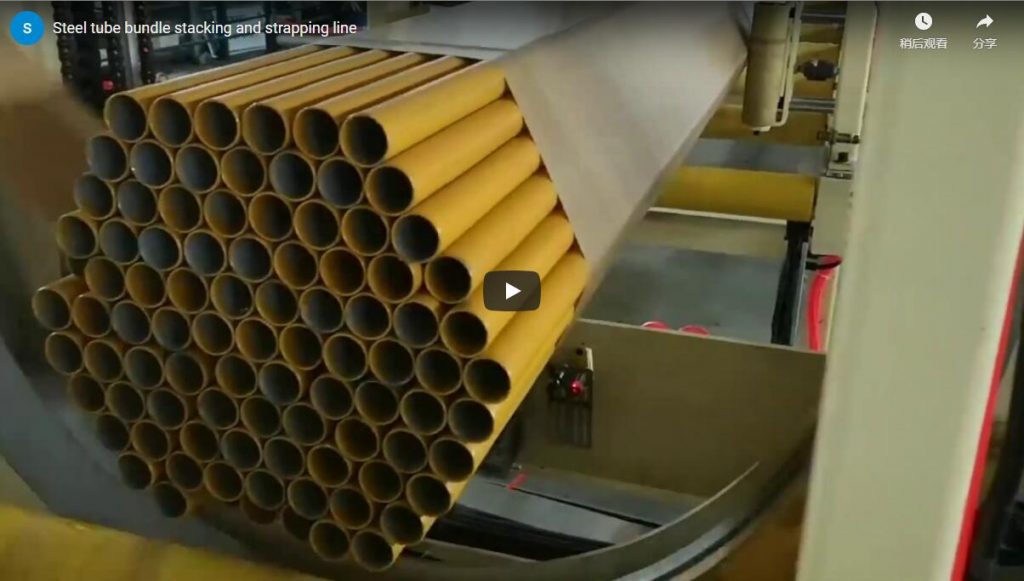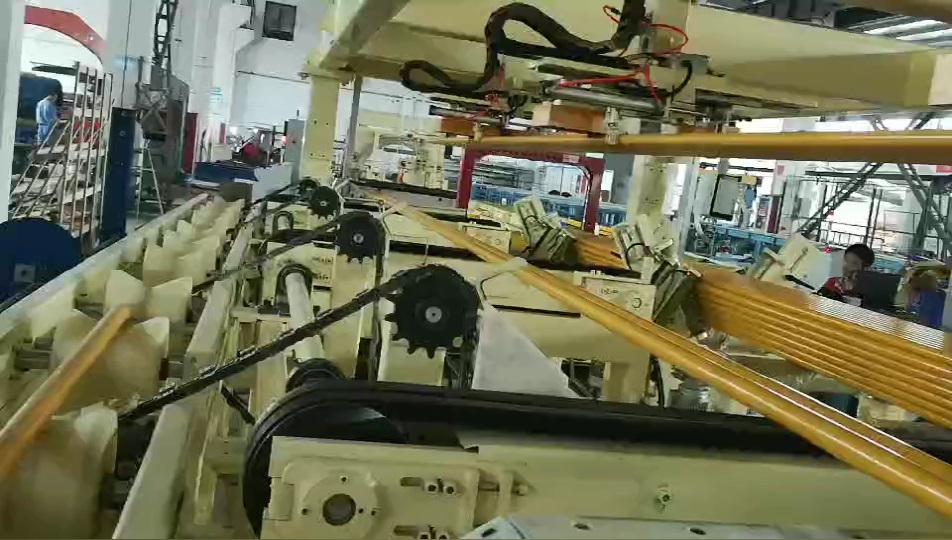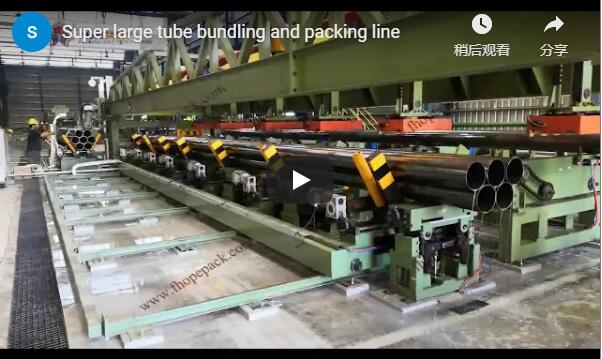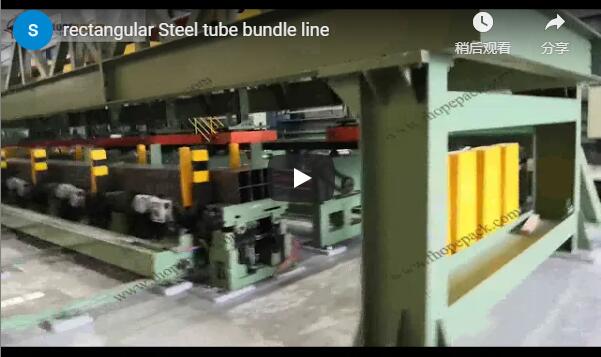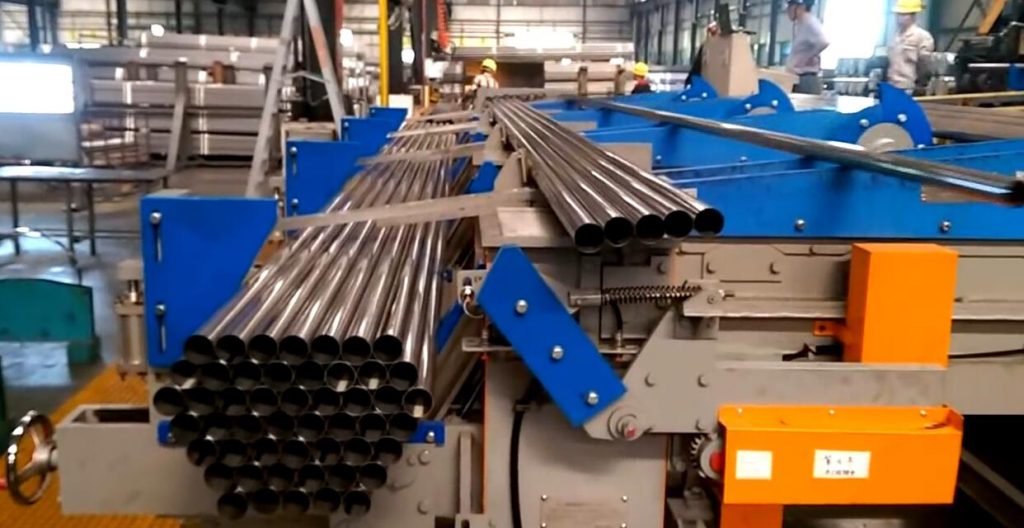Enhancing Efficiency: A Deep Dive into Small Steel Tube Bundle Strapping Systems
In modern metal fabrication and distribution, efficient handling and packaging of materials are paramount. Small-diameter steel tubes, while essential for numerous applications, present unique challenges in bundling and securing for storage and transit. Manual processes are often labor-intensive, inconsistent, and pose potential ergonomic risks. Automated solutions, such as the FHOPE small steel tube bundle strapping system, address these challenges head-on, offering significant improvements in throughput, safety, and package integrity.
Understanding the Technology: From Loose Tubes to Secure Bundles
Small steel tube bundle strapping systems represent a sophisticated integration of mechanical engineering and automation control, designed to streamline the end-of-line packaging process. Drawing inspiration from advancements documented in packaging automation research and patented strapping head designs (e.g., concepts focusing on strap feeding mechanisms and tension consistency, like those explored in patents US4586431A or EP0387471A concerning general strapping principles), these machines perform a sequence of operations with precision:
- Tube Collation and Counting: Incoming tubes are meticulously counted and aligned, often utilizing optical sensors or mechanical gates to ensure the correct number of pieces per bundle, adhering to specifications critical for inventory management and customer orders.
- Bundle Formation: Aligned tubes are gathered into a predefined bundle shape (e.g., hexagonal, square). Precision guides and clamps ensure bundle tightness and uniformity, crucial for stable stacking and transport.
- Conveyance: The formed bundle is transferred smoothly to the strapping station via conveyors or carrier systems, minimizing manual intervention and maintaining process flow. Research in material handling logistics emphasizes the importance of seamless transitions between process stages to maximize overall equipment effectiveness (OEE).
- Strapping Application: One or more strapping heads apply high-tensile steel or PET straps around the bundle at predetermined locations. Advanced systems incorporate tension control mechanisms, ensuring consistent strap tightness without damaging the tubes – a critical factor highlighted in studies on packaging integrity for metal products.
- Bundle Discharge: The securely strapped bundle is ejected from the system, ready for storage or shipment.
The FHOPE system showcased exemplifies these principles, particularly tailored for tubes with outer diameters typically in the 16-20 mm range, demonstrating how specialized automation can yield significant productivity gains in niche applications.
System Architecture and Operational Parameters
A typical Small Steel Tube Bundle Strapping System integrates several key components:
- Robust Frame: Provides structural integrity and houses the operational mechanisms.
- Infeed/Collation Section: Manages the initial sorting and counting of tubes.
- Bundle Formation Unit: Shapes and compacts the tubes.
- Conveyor System: Transports tubes and bundles through the process stages.
- Strapping Head(s): The core unit(s) responsible for feeding, tensioning, sealing, and cutting the strap material. Designs often focus on reliability and ease of maintenance, crucial factors discussed in manufacturing trade publications like The Fabricator.
- Control System (PLC): Programmable Logic Controllers orchestrate the entire sequence, allowing operators to set parameters (bundle size, strap number/position, tension) via an HMI (Human-Machine Interface) and integrating safety interlocks.
Key Technical Specifications (Illustrative Example):
Note: The parameters below provide a general overview and may not precisely match the specific equipment shown in the video. For exact machine specifications tailored to your application, please contact FHOPE directly.
- Control System: PLC with digital HMI display
- Operational Mode: Fully Automated Cycle / Semi-automatic options available
- Tube Diameter Capability: Typically handles ranges like 15mm - 114mm (Application Specific)
- Bundle Shape: Hexagonal, Square, Rectangular (System Dependent)
- Maximum Bundle Weight: e.g., up to 2000 kg (Varies by model)
- Strapping Material: Compatible with Steel or PET Strapping
- Strap Width/Thickness: Defined range (e.g., 16mm, 19mm)
- Strapping Tension: Electronically adjustable, potentially up to 7000 N (Ensures bundle security)
- Strapping Speed: Cycle times vary; e.g., 15-20 seconds per strap (System dependent)
- Number of Strapping Heads: Typically 1 or 2, depending on throughput needs
- Power Requirements: Standard industrial voltages (e.g., 480V, 60Hz, 3-phase or 380V, 50Hz, 3-phase)
- Safety Features: Emergency stops, safety guarding, interlock systems, jam detection (Compliant with CE / OSHA standards)
- Compliance Standards: Often designed to meet CE, ISO 9001
- Frame Construction: Heavy-duty welded steel for durability
Strategic Advantages in Metal Fabrication and Distribution
Implementing an automated small steel tube bundle strapping system offers compelling benefits that resonate with the operational goals highlighted in industry publications:
- Increased Throughput & Efficiency: Automating the bundling and strapping process dramatically reduces cycle times compared to manual methods, directly increasing production output.
- Enhanced Bundle Integrity: Consistent tensioning and precise strap placement ensure tightly secured bundles, minimizing the risk of loosening or shifting during handling and transport, thereby protecting product quality.
- Improved Safety & Ergonomics: Eliminates repetitive manual lifting, bending, and strapping tasks, reducing the risk of musculoskeletal injuries and improving workplace safety.
- Reduced Labor Costs: Frees up personnel previously assigned to manual strapping for higher-value tasks, optimizing labor allocation.
- Material Savings: Precise strap application and tension control can potentially optimize strap consumption compared to less controlled manual methods.
- Streamlined Logistics: Uniform, stable bundles are easier to stack, store, and load, improving warehouse space utilization and transport efficiency.
Key Application Areas
The versatility and efficiency of these systems make them invaluable across various sectors:
- Steel Tube Manufacturing: Integrated directly into production lines, these systems provide immediate, efficient packaging as tubes come off the mill, ensuring seamless flow to inventory or shipping.
- Metal Service Centers & Distribution Hubs: Essential for breaking down bulk shipments and preparing smaller, customer-specific bundles for dispatch. Automation ensures consistency and speed in high-volume environments.
- Automotive & Component Suppliers: Where small-diameter tubes are used extensively, automated bundling ensures parts are securely packaged for JIT (Just-In-Time) delivery to assembly lines, preventing damage and handling delays.
- Construction Material Suppliers: Efficiently bundles tubing used for scaffolding, conduit, or structural elements, facilitating easier management and transport to construction sites.
By automating a critical, yet often overlooked, part of the production and logistics chain, small steel tube bundle strapping systems deliver tangible improvements in efficiency, safety, and product presentation – key objectives for any competitive operation in the metal fabrication and distribution landscape.
For more detailed information on how a tailored system can meet your specific operational needs, please contact FHOPE at info@fhopepack.com.

